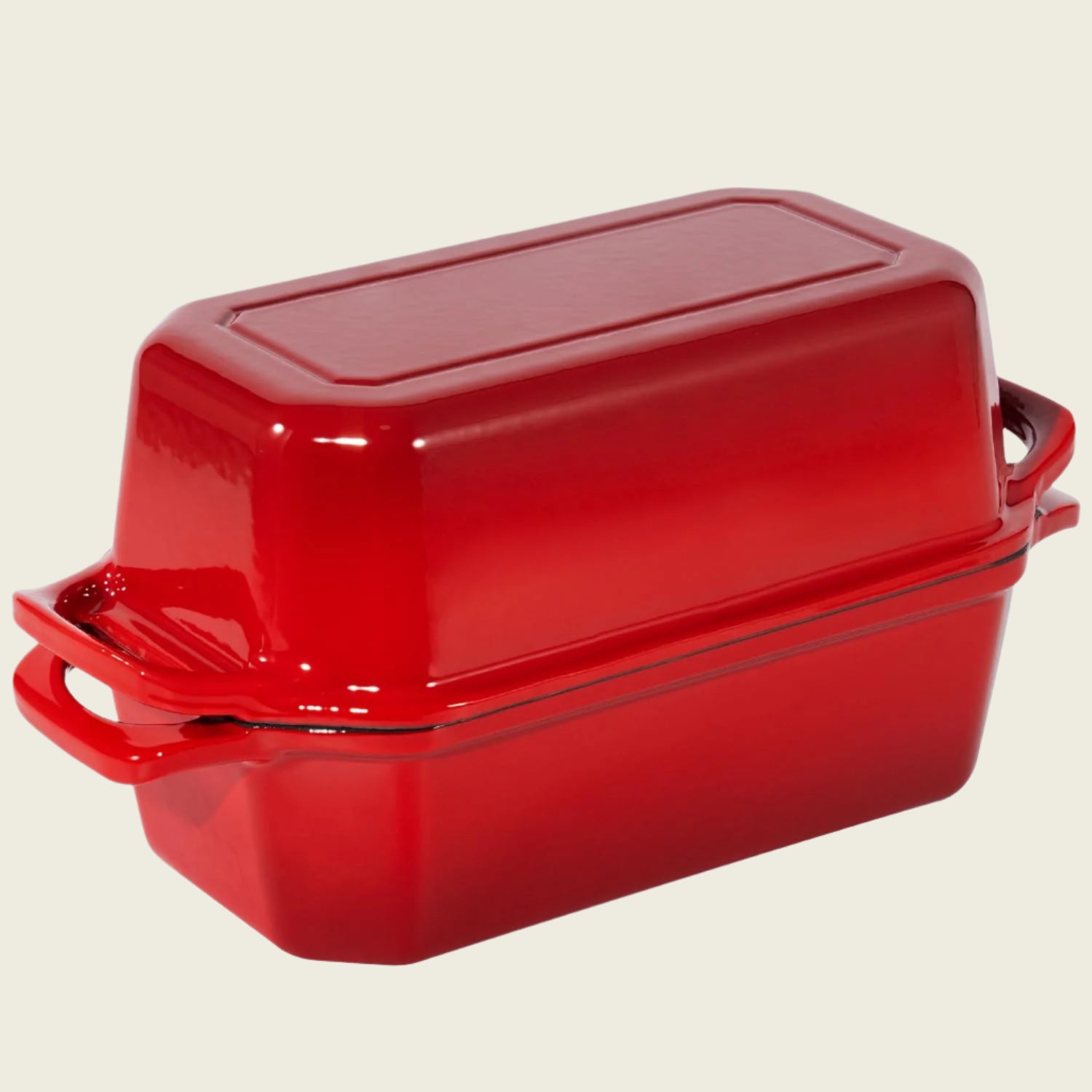Choosing the Right Dutch Oven Size for Sourdough Bread
Share
A Dutch oven can significantly improve your sourdough baking results, but choosing the wrong size can lead to disappointing loaves. Here's what you need to know to select the right Dutch oven for consistent, well-risen sourdough bread.
Why Use a Dutch Oven?
First, let's talk about why a Dutch oven is such a game-changer for sourdough baking. Think of it as having a professional bakery oven right in your kitchen. The secret? Steam. When your dough enters a preheated Dutch oven, the moisture in the dough transforms into steam, keeping the surface soft so it can expand and rise properly – what bakers call "oven spring." While the inside becomes light and airy, that steamy environment helps develop a thin, crackly crust. Without a Dutch oven, the steam would escape, resulting in a denser loaf with a tougher, chewier crust.
Choosing the Right Size
Size matters when it comes to Dutch ovens. Use one that's too small, and your dough might hit the lid as it rises, creating a squished loaf.
Here are my size recommendations:
For Standard Home Loaves (800-1000g total dough weight)
- 4 to 5.5 quart round Dutch oven
- Works for most recipe books and online tutorials
- Provides enough space for proper rise without excessive spreading
For Larger Loaves or Families
- 6 to 7 quart Dutch oven
- Accommodates bigger batches
- Better for oval-shaped loaves (batards)
Minimum Depth Requirements
Your Dutch oven should be at least 4 inches deep to allow adequate headroom for the bread to rise. Most quality Dutch ovens in the 4+ quart range meet this requirement.
Shape Considerations
Round Dutch ovens work best for round loaves (boules) and fit more efficiently in most home ovens.
Oval Dutch ovens accommodate longer, torpedo-shaped loaves (batards) but require more oven space and typically cost more.
For versatility, choose round unless you specifically prefer making oval loaves.
Space Requirements
To ensure your dough bakes perfectly, place your shaped dough inside the Dutch oven with about 1 inch of space around the edges. This extra room allows the dough to expand during baking without sticking to the sides.
Types of Dutch Ovens
Enameled Cast Iron
- Pros: Easy to clean, attractive, no seasoning required
- Cons: More expensive, enamel can chip over time
- Best for: Occasional bakers who want low maintenance
Raw Cast Iron
- Pros: Less expensive, extremely durable, excellent heat retention
- Cons: Requires seasoning and more careful maintenance
- Best for: Regular bakers comfortable with cast iron care
For sourdough, I recommend sticking with cast iron options rather than stainless steel or ceramic Dutch ovens, as they provide superior heat retention and distribution.
Safety First
Handling a heavy, hot Dutch oven can be intimidating. Always use high-temperature oven gloves – not flimsy oven mitts. Consider using a bread sling – a heat-resistant silicone fabric that helps you lower the dough into the Dutch oven and lift it out safely.
Maintenance Tips
Enameled Dutch Ovens
- Hand wash with warm soapy water
- For stuck-on bits, soak with baking soda paste
- Avoid abrasive cleaners that can damage enamel
Raw Cast Iron
- Clean while still warm with hot water and stiff brush
- Dry thoroughly and apply thin layer of oil to prevent rust
- Store in dry location
Making Your Decision
If you're new to sourdough baking: Start with a 5-quart round enameled Dutch oven from a reputable brand. This size handles most standard recipes and requires minimal maintenance.
If you bake frequently: Consider a raw cast iron option for superior heat retention and durability.
If you have a large family or prefer bigger loaves: Go with a 6-7 quart Dutch oven, keeping in mind it will take up more oven and storage space.
The Bottom Line
While a Dutch oven isn't absolutely necessary for sourdough (you can achieve good results with other steaming methods), it does provide consistent, reliable results that make the learning process easier. The key is choosing a size that matches your typical baking needs rather than buying the biggest option available.
A properly sized Dutch oven should give your loaves room to rise without excessive spreading, while still maintaining the enclosed environment that creates superior crust and crumb structure.


